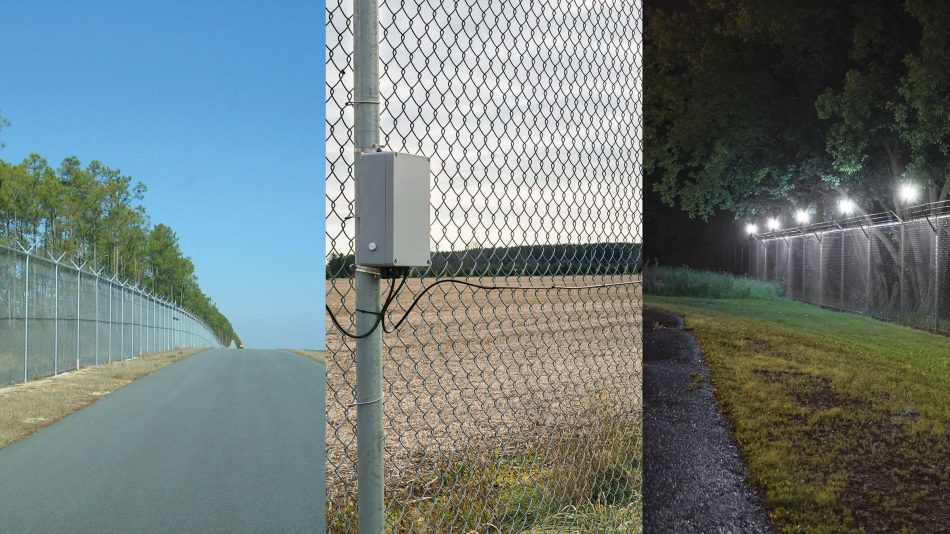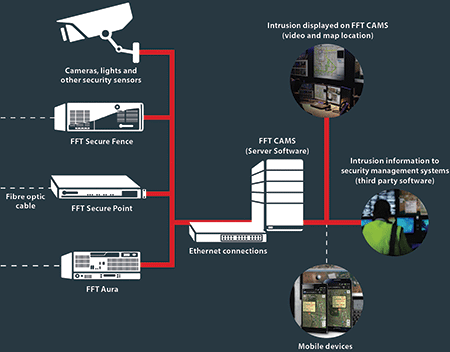How a Fiber Security System Provides Unmatched Dependability and Speed in Security Surveillance
Wiki Article
Enhance Your Security With Advanced Fiber Optic Safety Solutions
In an age where security is critical, innovative fiber optic security systems offer a compelling option for boosting security throughout numerous atmospheres. These systems not just flaunt remarkable transmission capacity and rate for high-resolution monitoring however also supply exceptional resilience against outside interferences. As organizations progressively look for dependable methods to protect their assets, the integration of cutting-edge innovations like AI and IoT within fiber optic structures increases important concerns about their performance contrasted to typical systems. What implications do these innovations hold for future protection procedures?Advantages of Fiber Optic Safety
Harnessing the advantages of fiber optic innovation considerably boosts safety systems across numerous applications. One of the primary benefits is the raised data transfer ability, permitting the transmission of large amounts of information at high rates. This is especially vital for real-time video surveillance, where high-resolution feeds can be sent out without latency, making sure immediate response capabilities.In addition, optical fiber display superior resistance to electromagnetic disturbance, which is essential in atmospheres with possible signal disturbances. This reliability makes certain regular efficiency in critical security procedures. In addition, fiber optic cables are much less vulnerable to touching and unauthorized accessibility compared to typical copper electrical wiring, therefore improving information integrity and discretion.
One more significant benefit is the durability of fiber optic systems; they are a lot more resistant to environmental variables such as wetness, temperature level fluctuations, and corrosive substances. This resilience equates to decrease maintenance expenses and longer lifespans for protection setups.
Last but not least, the light-weight nature of fiber optic wires promotes easier setup and routing, especially in complicated frameworks (fiber optic security system). Inevitably, the assimilation of fiber optic technology into protection systems not only reinforces defense measures yet also optimizes functional effectiveness
Key Functions to Think About
When examining fiber optic protection systems, a number of vital functions need to be considered to ensure optimum performance and performance. Evaluate the system's detection array and level of sensitivity; a substantial variety allows for monitoring huge areas, while high sensitivity ensures that also minor disruptions are identified immediately.Next, consider the assimilation abilities of the system. A fiber optic security system need to effortlessly interface with existing protection procedures such as cameras and alarm systems, producing a natural safety network.
Sturdiness and ecological resistance are additionally vital attributes. Ensure that the system is designed to endure extreme weather problems and prospective physical threats, as this will certainly prolong its functional lifespan.

Finally, check out the scalability of the system. A durable fiber optic safety and security system should be conveniently expanding to fit future needs without considerable overhauls. By carefully thinking about these functions, you can select a fiber optic security service that boosts safety and safety in your environment.
Installment Process Overview
To efficiently implement a fiber optic safety system, a systematic installation procedure is important. This process begins with a thorough site evaluation to identify the certain security requirements and to recognize optimum locations for fiber optic cables and protection tools. Following this evaluation, the setup team will certainly develop a detailed plan, consisting of cable television pathways, required equipment, and conformity with regional guidelines.Following, the setup involves laying the fiber optic wires, guaranteeing they are protected from environmental aspects and physical damages. Correct handling methods are vital, as fiber optic cords are delicate and can be quickly damaged. After the cabling is set up, connectors and discontinuations are meticulously finished to guarantee signal stability.
The succeeding stage includes mounting protection devices such as cameras, motion detectors, and alarm systems, all incorporated with the fiber optic network. Strenuous testing is performed to confirm that all components are operating correctly and to make certain optimal performance.

Comparing Fiber Optic to Traditional Equipments
The evolution of security innovation has actually caused substantial advancements in the comparison between fiber optic systems and standard copper-based systems. Fiber optic systems make use of light to transmit information, supplying premium transmission capacity and speed contrasted to their copper equivalents. This causes enhanced information transmission abilities, making optical fiber excellent for high-resolution video surveillance and real-time surveillance.Furthermore, fiber optic cables are immune to electromagnetic disturbance, decreasing the likelihood of signal deterioration caused by exterior elements. This particular guarantees regular performance, also in challenging atmospheres. On the other hand, typical copper systems are a lot more susceptible to interference, bring about prospective susceptabilities in safety and security applications.
Resilience is one more benefit of fiber optic systems. They are less vulnerable to harm from environmental aspects such as moisture and temperature variations, which can compromise copper electrical wiring. Fiber optics are lighter and thinner, allowing for simpler setup and lowered physical footprint.
However, standard systems often tend to have lower preliminary expenses, making them eye-catching for budget-conscious tasks. While fiber optic systems may need a greater ahead of time financial investment, their long-term benefits-- such as lower upkeep prices and greater dependability-- usually outweigh the initial cost, positioning them as a remarkable selection for modern safety demands.
Future Trends in Security Modern Technology
Arising trends in safety modern technology are positioned to change the landscape of security and threat detection - fiber optic security system. As organizations progressively encounter sophisticated dangers, developments such as fabricated intelligence (AI) and device learning (ML) are becoming important to protection systems. These modern technologies enhance the capability of fiber optic systems by allowing real-time information evaluation, identifying anomalies, and automating feedbacks to potential breachesAdditionally, the combination of the Net of Things (IoT) is changing safety and security structures. IoT tools can supply extensive situational understanding and assist in smooth interaction between different safety components. This interconnectedness permits much more reliable tracking and faster occurrence response times.
Biometric authentication is also acquiring momentum, giving a higher degree of safety through special physical characteristics. As this modern technology evolves, it is likely to be incorporated into fiber optic systems for improved accessibility control.
Verdict
In final thought, progressed fiber optic safety systems represent a substantial innovation in safety and security and surveillance technology. The shift fiber optic security system from traditional systems to fiber optic services mirrors an expanding trend in the direction of more efficient and effective safety steps in a significantly complex technical landscape.Report this wiki page